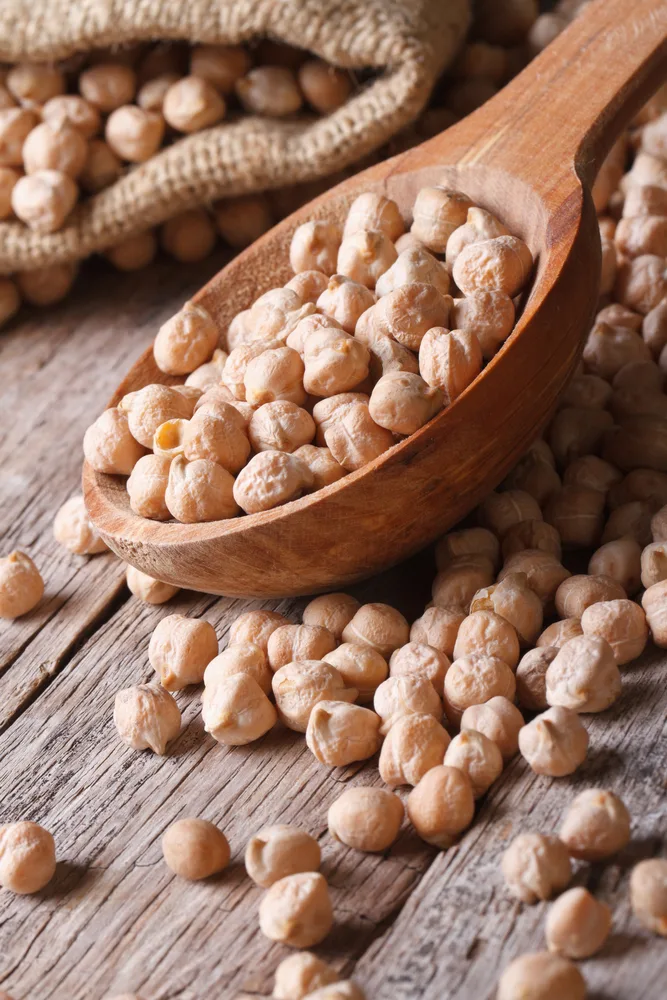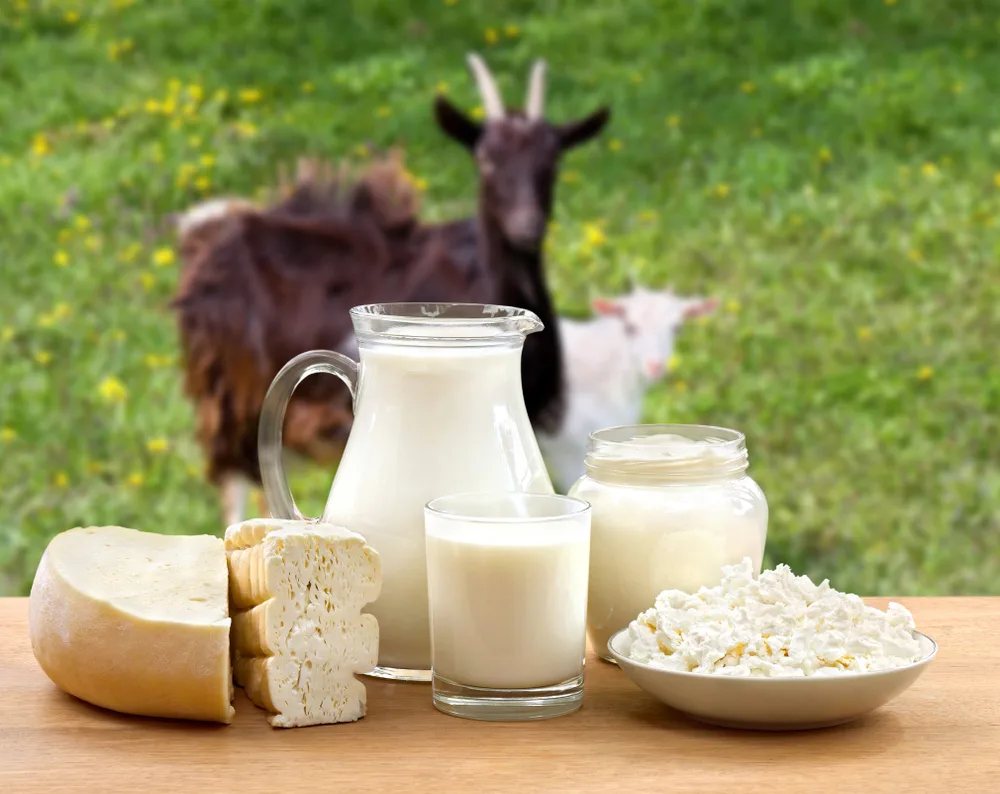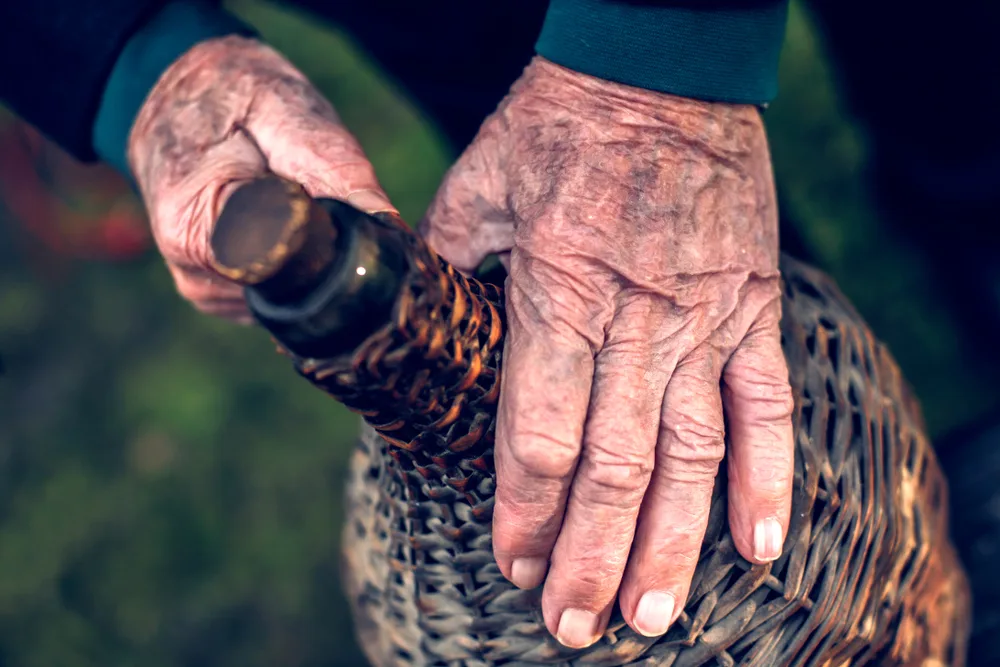Chickpeas, Goats, and Sardinian Cannonau wine
When it comes to the Sardinians, genetics, lifestyle and diet come together to create a loooooooong life. Sardinia is in one of the Blue Zones, with the world’s longest living people. There are a few things that factor into their bountiful existence, like the fact that they get a lot of natural exercise, which means not at a gym or by being ultra sportsmen, but rather by walking or biking to see friends or by hiking to herd their goats. While most of us don’t get natural daily exercise by climbing mountains to herd our goats, there are some more tangible lifestyle factors they have that are worth a good looksie, namely their diet. Their nutrition includes an array of antioxidant-rich compounds found in abundance in the chickpeas, goat cheese and cannonau wine they consume. These are all staples of the Sardinian diet, so what is so special about them that could give someone a 100 year long health boost? Let’s start with chickpeas.
Chickpeas
Chickpeas, aka garbanzo beans, are an annual legume of the family Fabaceae. They are native to the Mediterranean region and are a major ingredient of many of their local dishes. Like most of the Blue Zones, Sardinians eat food that is locally grown, supporting the local economy, the environment, and their health. Chickpeas fall into this category and they are a staple of the Sardinian diet.

So how are chickpeas a boon to our health? Allow me to roll out the list…
- They help lower blood glucose levels and are recommended by the American Diabetes Association to help keep blood sugar levels in check.
- They help prevent bone loss and osteoporosis due to their high iron and calcium levels.
- They decrease LDL cholesterol (the bad guys) and support heart health with their high levels of fiber, potassium, B vitamins, iron, magnesium, and selenium.
- They support mental health with their high levels of choline, which plays a significant role in mood, muscle control, learning, and memory.
- They help prevent high blood pressure due to their high levels of potassium.
- They are a great source of fiber to support digestion.
- Chickpeas keep energy levels high. A cup of garbanzos contains 64% of your daily copper and 26% of your daily iron. This dynamic duo work as a team to keep you energized by staving off anemia and keeping cells full of energy.
- Along with their other nutrients, chickpeas also have protein, which is essential for bone, muscle, and skin health. Sardinians, as a culture, are not vegetarians, however their diets are more vegetable and legume heavy. A cup of chickpeas provides almost one-third of an adult’s daily protein needs.
The magic behind goat milk

Next on the list is goat milk. Goat milk is one of the most commonly consumed forms of dairy on the planet. In fact, nearly three quarters of the world’s population drink goat milk. The majority of the world’s population doesn’t have access to industrialized factory farmed cows and they rely on goats and sheep for their dairy. But joke’s on us because in fact, goat milk is healthier for the body, easier to digest (and in most cases, far more humane to produce) than cow’s milk. Cow’s milk has a protein called A1 beta casein and this can be extremely inflammatory and hard to digest for a large portion of the population.
The symptoms of this internal inflammation caused by A1 dairy aren’t always obvious, like a stomach ache is. Symptoms due to a sensitivity to this protein can show up by triggering Type 1 diabetes, auto-immunity, lymphatic congestion, metabolic suppression, and weight gain. It can also worsen acne, eczema, upper respiratory infections, asthma, and allergies. It can be a silent ‘provoker’, but the good news is that A1 beta casein has a cousin named A2 casein and this is a far friendlier and healthier form of dairy. Where do we find A2 casein? That’s right, in goat and sheep milk (and a few select cow breeds).
The A2 amino acid strand has a different structure compared to A1. This difference in structure helps the A2 protein break down easier in the human gut. In fact, some people with allergies to cow milk often find that goat milk doesn’t trigger their allergies. One study found about one in four babies who were allergic to cow milk weren’t allergic to goat milk. But that’s not all. Goat milk is also stacked with vitamins. It has higher levels of vitamins A, C, B6, potassium, calcium, magnesium, zinc, selenium and iron – and it is higher in protein and lower in sugar. It is sort of a win, win, win.
An extra piece of interesting food for thought is that research is also showing that free range goats that graze on their natural environment have rich-bioactive compound forages, increased total polyphenols, hydroxycinnamic acids, and flavonoid concentrations in their milk and cheese. This could be another piece to the puzzle of why Sardinians live so long. Thirty percent of their diet comes from goat cheese and that cheese comes from goats that live off the land. Those goats are passing down through their milk, the polyphenols that they get from grazing naturally off the land. And boom – another infusion of nutrients into the Sardinian body…
Now take all those polyphenols from goat cheese and add them to all the other polyphenols that Sardinians get from the cannonau wine they drink – and well – no wonder they are living to be 100. Going to one of their wine and cheese parties would be like taking a multivitamin – and then some.
Cannonau Wine of Sardinia

If you’re on the hunt for a wine that is both delicious and healthy, look no further. Sardinians credit their long lives to a slower lifestyle, a Mediterranean diet, strong social bonds, and daily consumption of a robust red wine, called Cannonau, This longevity wine, made from the Grenache grape, has been growing in Sardinia since the Neolithic period and is one of the most widely planted grapes on the island. With its low acidity level and high alcohol content, the flavors range from fruity to dark, while rich and structured with a spiced earthiness. But the incredible difference about this particular grape isn’t in its flavor. It’s that it grows especially thick-skinned on the island of Sardinia. It is this thick skin that increases the tannins and antioxidant benefits, making it one of the healthiest red wines in the world.
This ruby elixir has the highest levels of antioxidants and polyphenols of any wine (three times more than other red wines), which are linked to healthy hearts, protecting against cardiovascular disease. Antioxidants also help prevent damage to DNA that can contribute to aging, therefore important for longevity. Cannonau is also rich in anthocyanins (commonly found in berries), naturally occurring compounds responsible for the red/purple color of red-wine grapes, with its own antioxidant effects as well. This ‘fountain of youth’ also has some of the highest levels of resveratrol, another polyphenol found in the skin of the grapes, which studies have shown to help combat the formation of plaque found in the brains of dementia patients.
While it is tempting to think you can never have too much of a good thing, as with most wines, you don’t need to consume much to reap the benefits. Sardinians have about 2 glasses a day and some of them even have a small glass with breakfast. Though your local wine store may not carry cannonau, it is easy to find online shops that can send it to you.
So now are you ready to throw a chic new type of wine and cheese party? You can start the new year by creating your own Blue Zone amongst your friends and family. Have fun experimenting, evolving, and keeping it light as with the rest of life!
